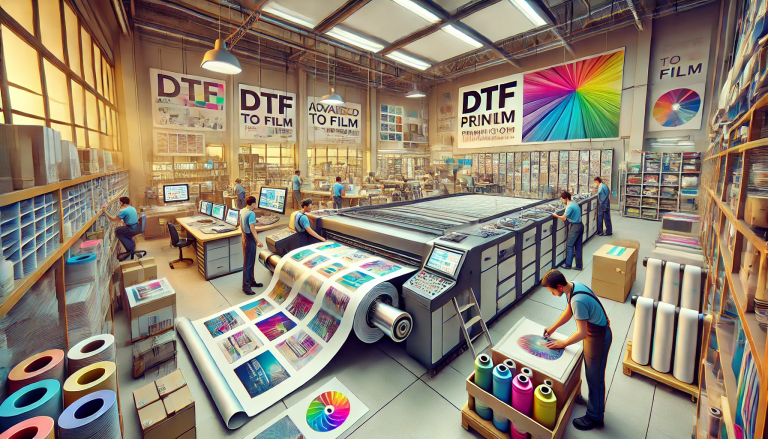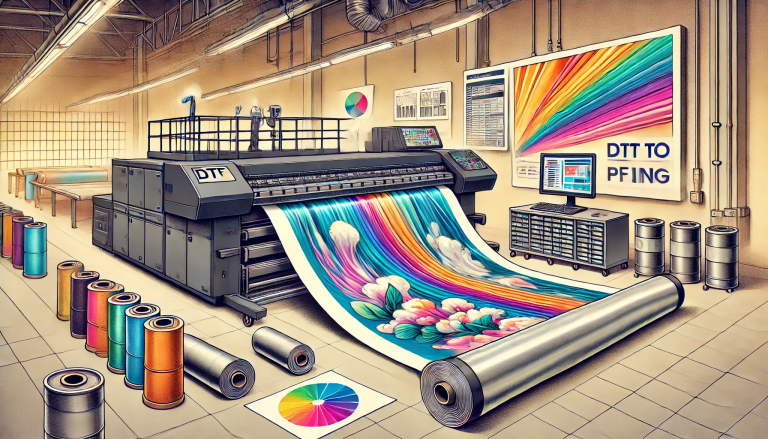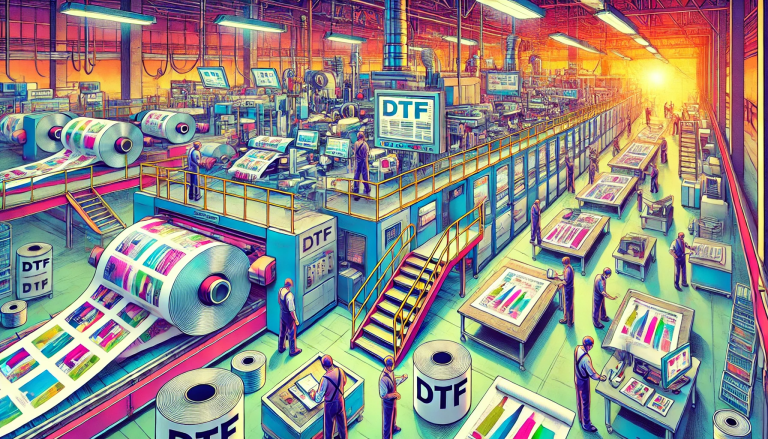“Print on Both Sides of the Film with DTF Film – Get the Most Out of Your Prints!” -MAXDTF- DTF Transfer roll Supplier, impresora DTF A3 Factory, Made in china
Introduction
Which side of DTF Film double-sided do you print on? This is an important question to consider when printing with DTF Film. DTF Film is a type of film that is used for a variety of printing applications, including dye-sublimation, digital printing, and screen printing. It is a versatile material that can be used to create a wide range of products, from t-shirts to banners. However, it is important to understand which side of the film should be printed on to achieve the best results. In this article, we will discuss the different sides of DTF Film and how to determine which side should be printed on.
Tips for Achieving the Best Results When Printing on DTF Film
1. Ensure that the printer is properly calibrated: Before printing on DTF film, it is important to ensure that the printer is properly calibrated. This will ensure that the colors and images are printed accurately and that the film is not damaged during the printing process.
- Use the correct type of ink: Different types of ink are available for printing on DTF film. It is important to use the correct type of ink for the best results.
- Use the correct settings: When printing on DTF film, it is important to use the correct settings. This includes the resolution, color mode, and other settings.
- Clean the printer regularly: Regularly cleaning the printer will help to ensure that the print quality is not affected by dust or other debris.
- Use a high-quality film: Using a high-quality film will help to ensure that the colors and images are printed accurately and that the film is not damaged during the printing process.
- Use a lint-free cloth: When handling the film, it is important to use a lint-free cloth to avoid any dust or debris from getting onto the film.
- Allow the film to dry completely: After printing, it is important to allow the film to dry completely before handling it. This will help to ensure that the colors and images are not smudged or damaged.
- Store the film properly: When not in use, it is important to store the film properly. This includes keeping it away from direct sunlight and in a cool, dry place. How to Choose the Right Side of DTF Film for Your Printing ProjectWhen it comes to selecting the right side of DTF film for your printing project, there are a few key factors to consider. First, you need to determine the type of material you are printing on. Different types of materials require different types of DTF film. For example, if you are printing on glossy paper, you will need a glossy DTF film. If you are printing on matte paper, you will need a matte DTF film.
Second, you need to consider the type of ink you are using. Different types of inks require different types of DTF film. For example, if you are using a dye-based ink, you will need a dye-based DTF film. If you are using pigment-based ink, you will need a pigment-based DTF film.
Third, you need to consider the type of printer you are using. Different types of printers require different types of DTF film. For example, if you are using a laser printer, you will need a laser-compatible DTF film. If you are using an inkjet printer, you will need an inkjet-compatible DTF film.
Finally, you need to consider the type of image you are printing. Different types of images require different types of DTF film. For example, if you are printing a photograph, you will need a photographic DTF film. If you are printing a vector image, you will need a vector DTF film.
By taking all of these factors into consideration, you can ensure that you select the right side of DTF film for your printing project. With the right DTF film, you can achieve the highest quality results for your project.
The Benefits of Printing on the Matte Side of DTF Film
Printing on the matte side of DTF film offers several benefits for those looking to create high-quality prints. DTF film, or direct-to-film, is a type of media that is used for printing images directly onto a film substrate. It is a popular choice for those looking to create durable, long-lasting prints.
One of the main benefits of printing on the matte side of DTF film is that it provides a more consistent finish. The matte side of the film has a smooth, even surface that helps to ensure that the colors and details of the image are accurately reproduced. This is especially important for those looking to create prints with a high level of detail and accuracy.
Another benefit of printing on the matte side of DTF film is that it is more resistant to scratches and other damage. The matte finish helps to protect the image from wear and tear, ensuring that it will last for years to come. This makes it an ideal choice for those looking to create prints that will stand the test of time.
Finally, printing on the matte side of DTF film also helps to reduce glare. The matte finish helps to reduce the amount of light that is reflected off the surface of the film, making it easier to view the image without any distracting glare. This is especially important for those looking to create prints that will be displayed in bright, well-lit areas.
Overall, printing on the matte side of DTF film offers several benefits for those looking to create high-quality prints. It provides a more consistent finish, is more resistant to scratches and other damage, and helps to reduce glare. For these reasons, it is an ideal choice for those looking to create prints that will stand the test of time.
Conclusion
In conclusion, when printing on DTF Film double-sided, it is important to remember that the printable side should always be facing up. This will ensure that the print is of the highest quality and that the film will adhere properly to the substrate. Additionally, it is important to remember that the film should be stored in a cool, dry place to ensure that it does not become damaged or warped. Following these simple steps will ensure that your prints are of the highest quality.






